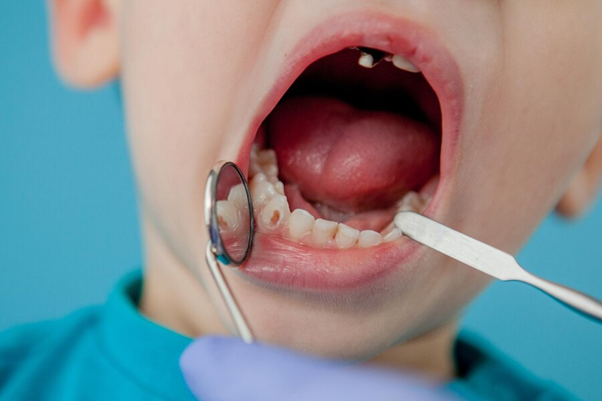Dental caries, commonly known as tooth decay or cavities, is a prevalent oral health issue that affects people of all ages.
This blog will help you understand the stages, causes, symptoms, risk factors, diagnosis, and treatment options for dental caries, empowering you to take control of your oral health.
Stages of Dental Caries
Early Stage:
In the initial stages, dental caries may appear as pale or brownish spots on the tooth's surface.
These spots indicate demineralization, where minerals are lost from the enamel due to acidic byproducts from bacteria.
Regular brushing and fluoride toothpaste can help reverse this stage.
Late Stage:
If left untreated, caries progress, and the spots may turn dark brown or black.
Cavities may form on the tooth surface, causing pain and sensitivity.
Untreated caries can extend into the dentin and eventually infect the tooth pulp.
Causes of Dental Caries
Bacteria: Over 700 types of bacteria in the mouth can contribute to dental caries. They feed on sugar and produce acidic metabolites that attack tooth enamel.
Poor Oral Hygiene: Inadequate brushing and flossing lead to the accumulation of plaque, a sticky bacterial film that can erode enamel.
Sugary Foods and Drinks: Carbohydrates in sugary items provide a breeding ground for bacteria.
Dry Mouth: Reduced saliva flow fails to neutralize acids and remineralize enamel.
Smoking: Tobacco use promotes dry mouth and increases the risk of tooth decay.
Some Diseases: Conditions like anorexia, bulimia, heartburn, and reflux disease can cause tooth erosion and caries.
Prevalence and Risk Factors
Dental caries is one of the most common diseases worldwide.
The risk factors include poor oral hygiene, dry mouth, sugary diets, and smoking.
Families with similar eating and hygiene habits may experience a higher occurrence of caries.
Symptoms
Early Stage: White spots on teeth indicate mineral loss from enamel.
Late Stage: Visible cavities may form, causing pain and sensitivity.
Untreated caries can lead to dental abscesses or tooth loss.
Diagnosis
Dentists use mirrors, probes, and x-rays to detect caries. Early-stage caries are challenging to identify, emphasizing the importance of regular dental check-ups.
Treatment Options
Early-Stage Treatment:
Improve oral hygiene with regular brushing and flossing.
Use fluoride toothpaste to promote remineralization.
Professional cleanings and fluoride varnish can aid in reversing early caries.
Late-Stage Treatment:
Dental Fillings: Remove decayed portions and restore tooth shape with materials like amalgam, composite resin, or ceramics.
Root Canal Treatment: When caries reaches the pulp, root canal therapy is necessary to save the tooth.
Dental Crowns: Protect weakened teeth, often after root canal treatment.
Tooth Extraction: For severely damaged teeth beyond repair.
Prevention
- Adopt a daily oral hygiene routine, including brushing and flossing.
- Use fluoride-containing dental products to strengthen enamel.
- Consume a balanced diet, reducing sugary foods and drinks.
- Maintain good saliva flow by staying hydrated.
- Chewing sugar-free gum can stimulate saliva and neutralize acids.
- Regular dental check-ups every six months for professional cleaning and early diagnosis.
Dental caries is a common but preventable condition that affects oral health. By understanding its stages, causes, symptoms, risk factors, diagnosis, and treatment options, you can take proactive steps to protect your teeth. Practicing good oral hygiene, maintaining a healthy diet, and visiting your dentist regularly will help ensure a beautiful and healthy smile for years to come.



